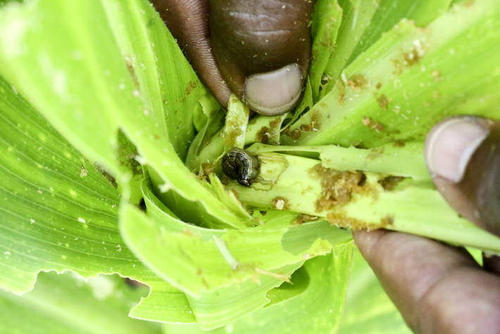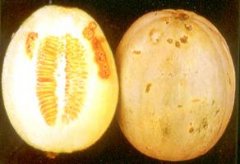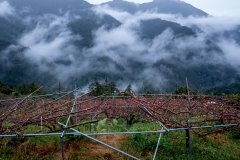What is an army bug in autumn? What are the prevention and control methods for the impact caused by military insects in autumn?
The autumn army insect is a kind of moth native to tropical and subtropical regions of America. It is recognized by the Food and Agriculture Organization of the United Nations (FAO) as an important agricultural pest in the world. This is also a common pest of corn.
The larvae of autumn army insects eat many different crops, mainly corn, but they also eat most crops, including rice, sorghum, millet, sugar cane, vegetables and even cotton.
The egg mass of the autumn army worm is fluffy with a large number of abdominal villi of the mother worm, and the mature larvae after hatching have two recognizable features: a yellow inverted Y shape on the head and four spots on each body segment on the back.
The influence of army insects in autumn
At present, autumn army insects have caused agricultural losses in many parts of the world, and up to 70% of crops in some parts of Africa have been damaged by autumn army insects, which, according to CNN, has caused a loss of about US $6 billion (about NT $186 billion), which is not to be underestimated.
Autumn army insects have invaded many provinces in southern China, which will have a great impact on China's locally produced food crops, including soybeans and corn. Coupled with the ongoing trade war between China and the United States, China is expected to raise import tariffs on American goods, but China imports a large proportion of its grain from the United States, including wheat, corn and soybeans, with the dual effects of insect pests and trade war. it is likely to further push up China's domestic food prices.
In the case of corn, which is the favorite of the autumn army insect larvae, the most likely locations are: the back of the leaves of the corn plant, the corn fruit, and the apical whorl leaves. The larvae of the autumn army insects do not eat from the edge of the leaves, but bite a hole directly from the middle of the leaves.
According to the International Centre for Applied Biosciences (CABI), the larvae of the armyworm fall into the soil after staying on the plant for 14 days, and the adults emerge about 8-9 days later. After mating, adults begin to look for places where they can lay eggs. Female adults can lay about 100 eggs at a time, about 1000 eggs in a lifetime, and the life span of a generation is about one month.
Control methods of military insects in autumn
At present, there is no low-cost, and large-scale culling of autumn army insects, once the invasion, because of the fast spread, it is not easy to eradicate. However, in fact, many control methods have been developed in the Americas. In the case of the United States, at present, genetically modified crops are mainly used for biological control with the natural enemies of autumn army insects, or with related pesticides.
However, the cost of these methods is relatively high, especially the use of GM crops, which is less affordable for farmers in parts of Africa and Asia because most of them are small farmers. The United Nations Food and Agriculture Organization has also worked with governments to provide pest control advice and assistance appropriate to the situation of each country.

- Prev

What harm does bacterial fruit spot of cantaloupe and watermelon have? Control of bacterial Fruit spot in Watermelon
From 1992 to 1993, in the coastal area of Yunlin County and Shanhua area of Tainan County, it was sporadically found that the fruit surface of large watermelon showed irregular water immersion, slightly cracked disease spot, mainly occurred in the rainy season, the disease spot spread on the pericarp, and did not harm the pulp at the initial stage. May 1997 is suitable for Taiwan.
- Next

Apple planting techniques: Apple farmers' work in the four seasons, how to pollinate apple trees artificially?
What is the four seasons homework of apple farmers? is it the same as the technique of potted apples? Let's have a look! At the end of March, before the apple trees blossomed, fruit growers began to "administer medicine". Although they were "beating", they actually sprayed fungicides, pesticides and other agricultural agents.
Related
- Fuxing push coffee new agricultural production and marketing class: lack of small-scale processing plants
- Jujube rice field leisure farm deep ploughing Yilan for five years to create a space for organic food and play
- Nongyu Farm-A trial of organic papaya for brave women with advanced technology
- Four points for attention in the prevention and control of diseases and insect pests of edible fungi
- How to add nutrient solution to Edible Fungi
- Is there any good way to control edible fungus mites?
- Open Inoculation Technology of Edible Fungi
- Is there any clever way to use fertilizer for edible fungus in winter?
- What agents are used to kill the pathogens of edible fungi in the mushroom shed?
- Rapid drying of Edible Fungi

